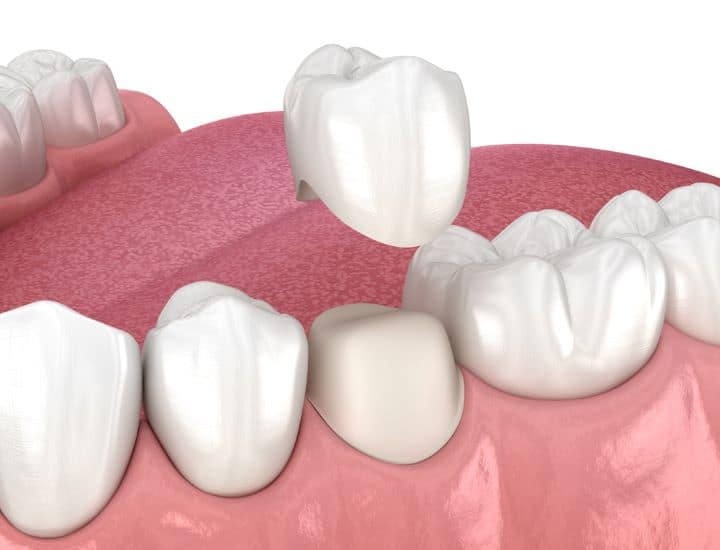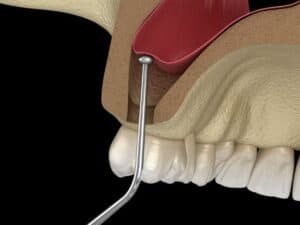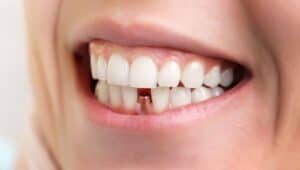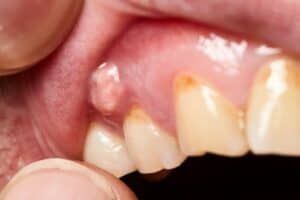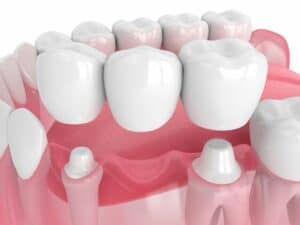A permanent retainer is a single fixed metal appliance that an orthodontist bonds to your teeth using a dental bond.

This appliance is fixed inside the mouth after you have undergone orthodontic treatment.
Permanent retainers work by keeping your teeth in place and preventing them from shifting back to their original positions. The type of retainer used depends on your case, the orthodontist’s expertise, and your budget.
How it works
A permanent retainer is made of a metal wire, that is bonded directly to the back of your teeth usually four to six teeth.
This fixed bonded retainer remains in your mouth at all times to act as a barrier and prevent your teeth from moving back where they were before treatment.
It keeps your teeth in their proper places and alignment long-term so you continue enjoying your beautiful smile.
Permanent retainers are fixed on the bottom teeth as they are more prone to movement than upper teeth.
Types of permanent retainers
There are two main types of permanent retainers. An orthodontist may use a “canine-to-canine” retainer, which is fixed only across your lower front teeth between your lower front six teeth.
Or they may use a “full-arch” retainer that extends across all of your lower teeth. All of which keep your teeth from shifting back. Retainers can last for a decade if taken care of properly
No matter the type, following guidelines for proper brushing, flossing, and using floss threaders is essential. This helps keep your retainer clean and prevents tooth decay teeth and gum disease.
Single Metal Wire Retainer
The most common type of retainer is a single-wire retainer.
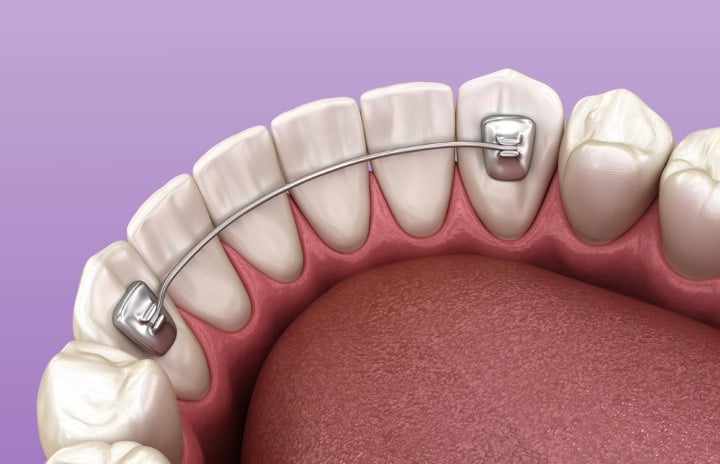
This retainer is made of a single wire made of metal. Your orthodontist will place this wire on the back of your lower front teeth after you finish wearing braces.
The wire, which is typically made of metal, helps keep your teeth in place and prevent them from shifting. This helps your teeth stay where they need to be to have a beautiful smile.
Fixed Bonded Retainer
Another type of permanent retainer is a fixed bonded retainer. It uses a similar metal wire but your orthodontist bonds it directly to your teeth using a strong bonding agent.
This ensures the wire stays firmly in place and preserves your teeth in their new positions.
Fixed bonded retainers are commonly used for cases where teeth were severely crowded or rotated before orthodontic treatment.
Lingual Retainer
Some orthodontists use lingual retainers instead. With this type, the retainer is fixed on the back of the teeth rather than the outside.
Lingual retainers are less visible to others but placing the wire on the back of the front teeth may make it harder to clean around the retainer wire.
Benefits of Permanent Retainers
Stays in place all the time
A permanent retainer is always in your mouth keeping your teeth aligned.
Unlike removable orthodontic retainers, you never have to worry about forgetting to put it in before bed or losing it.

The fixed metal wire is securely bonded behind your teeth by your orthodontist so it cannot fall out or come loose. This helps keep teeth in their corrected positions.
No risk of losing it
Permanent retainers don’t require the extra care experienced with removable retainers. With a permanent retainer, you never have to worry about misplacing or damaging your retainer.
Because it is permanently bonded to the back of your teeth, it cannot be lost or broken like a removable plastic retainer. If not lost or broken, a permanent retainer can last a long time before a replacement is needed.
Less embarrassing than removable retainers
Unlike wearing a removable retainer that can cause a lisp or be visible in your mouth, a permanent retainer is discreetly fixed behind your teeth where no one can see it.
Though more expensive than removable retainers, permanent retainers prove effective in the long term. The lingual wire won’t draw attention to itself, keeping your beautiful smile looking natural.
Maintains proper position of teeth
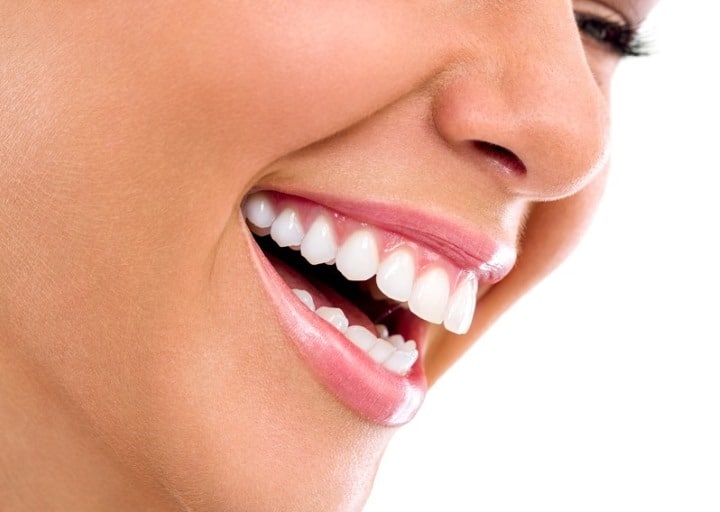
Made of either stainless steel or aesthetic orthodontic wire material, your permanent retainer is designed to prevent your teeth from shifting back to their original, misaligned position.
Bonded directly to your bottom front teeth using special dental cement, the retainer wire will hold your teeth in place and guide your bite, keeping your smile just as your orthodontist arranged it.
Long-Term Value of Permanent Retainers
Saves money over multiple removable retainers
Reasons for getting a permanent retainer vary according to the case. A permanent retainer is always in place. Getting a permanent retainer means you won’t need to replace removable retainers over time. Studies show removable retainers break in 20% of cases, requiring a new one.
On average, the cost of a permanent retainer is $150-500 initially for placement, compared to $50-150 per removable retainer replacement.
While the permanent retainer has a higher initial cost, it may cost less long term since it can last up to 20 years with proper care like brushing and flossing.
Prevents future orthodontic treatments
Without a retainer to keep your teeth in place, studies found 50% of teeth may shift within 5 years of braces treatment.
A permanent retainer helps maintain teeth in their corrected positions after getting braces.
It uses a lingual technique, bonding a retainer wire to the back side of the lower front teeth to guide them into the proper positions.
How To Maintain And Clean Permanent Retainers
Cleaning Regularly
You must clean your permanent retainer daily to keep it functioning properly. Gently brush your teeth and around the retainer wire with a soft toothbrush without bending the wire.
Flossing can be difficult with a fixed retainer, as the floss can’t reach due to the retainer being tightly bonded to the upper or lower teeth.
So, use a floss threader to go underneath the wire and remove plaque. Even better than a floss threader is a water flosser for its ability to reach tight spaces.
Cleaning your permanent retainer will protect your teeth and gums against dental problems like cavities and gum disease. If you can’t follow proper oral hygiene, it is best to use removable retainers if possible.
Checkups with Dentist
Be sure to visit your orthodontist for regular checkups to maintain the health of your teeth.

During appointments, they will examine your retainer to confirm it remains securely bonded to your teeth.
Your orthodontist also evaluates the condition of your teeth and gums surrounding the retainer. While good oral hygiene is important, only a dental cleaning can remove plaque that forms in hard-to-reach areas.
Replacing Wires if Needed
On rare occasions, the retainer wire may become damaged over time. It could bend or break from biting hard foods.
A functional retainer prevents damage to your teeth if they move back to their original positions.
If the retainer gets bent or moves, it may no longer be effective. A broken permanent retainer can be replaced by your orthodontist.
Conclusion
Permanent retainers are fixed after braces to prevent your teeth from shifting back. A new retainer fixed to your teeth costs between $150-500. However, the overall cost of a permanent retainer may differ based on the orthodontist’s expertise and your case.
Using fixed retainers with proper care enables you to have them for over twenty years. Permanent retainers require brushing and flossing to keep them clean.
This reduces future expenses compared to a removable retainer, which may require replacements if lost or broken.
Talk to your orthodontist about which retainer is best for maintaining your orthodontic treatment results.
As the orthodontic expert, they can evaluate your needs and explain the pros and cons of a permanent fixed retainer versus a removable one.
Summary
A permanent retainer is a fixed metal wire bonded behind the front teeth by an orthodontist to prevent shifting after braces.
It comes in different types but the most common is a canine-to-canine lower retainer fixed only on lower front teeth.
Good oral hygiene is key to maintaining oral health. This includes brushing/flossing techniques around the fixed wire.
Checkups are needed to ensure the retainer stays securely bonded and teeth/gums remain healthy.
FAQs
Do permanent retainers cause cavities?
A permanent retainer can make it harder to keep your teeth clean. It may trap food and plaque between your teeth.
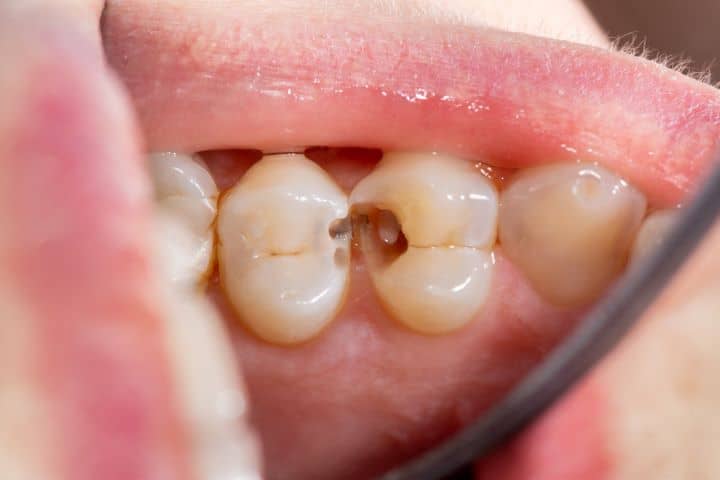
If you do not clean well each day, this extra food could cause decay or gum disease over time.
Will I be able to floss with a permanent retainer?
Flossing may be tricky with a permanent retainer. The wire gets in the way of floss reaching below your gums.
However, your orthodontist will show special methods to gently floss under the retainer, like using floss threaders.
How long do permanent retainers last?
A permanent retainer is meant to maintain your new smile long-term, sometimes for decades with good care.
The wire is securely bonded to help keep your teeth straight. Still, checkups let your orthodontist watch for minor shifting over the years.

